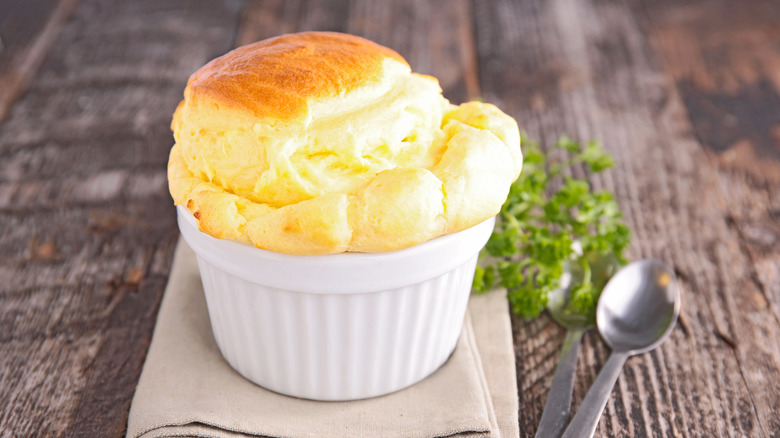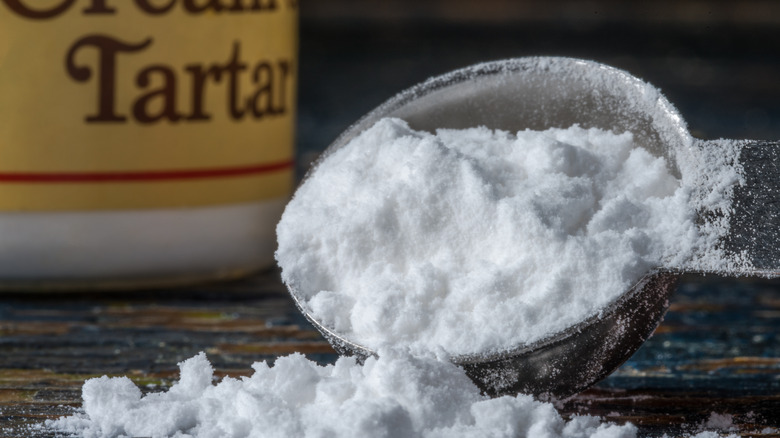For A Taller Soufflé, Don't Forget The Cream Of Tartar
The daunting soufflé has been the source of many kitchen disasters throughout history. Cries of "It collapsed!" echo down the halls of time as adults weep and children look on, confused. Okay, that may be a bit dramatic, but why is the soufflé so prone to self-destruction? According to Wonderopolis, soufflés are made of whipped egg whites with egg yolks carefully folded back in and additional ingredients, sweet or savory, mixed in as well. In the oven, the soufflé is meant to expand upward, creating a fluffy, custard-like dish. It is reminiscent of a meringue; the egg white's proteins are meant to blend with the air bubbles and make the soufflé rise. The problem is that air pockets are not always reliable, and given the wrong bump or a change in temperature, a soufflé could fall.
Who in the world came up with a recipe that could simply fall apart? Eater tells us that the dish was first created by Marie-Antoine Carême in the mid-19th century. The dish became popular in the 20th century and was known to be made for special occasions and at high-end restaurants. The soufflé was named after the French word for "to puff," which is exactly what this dish is intended to do. But if you are planning on making your own recipe at home, never forget to add the all-important cream of tartar into the mix, or you might just find your dish fallen flat.
Cream of tartar will help stabilize your soufflé
Whatever you do, don't forget the cream of tartar in your soufflé. You might not think that a little white powder sprinkled in does much, but it actually helps your recipe rise. Cream of tartar is an acid created through the production of wine and is often added to egg whites in a soufflé, though sometimes lemon juice is used in its place (via Masterclass). eHow says that when the cream of tartar is mixed with the egg, the mixture thickens and the proteins tighten, becoming more stable and less likely to fall apart and let the soufflé collapse.
According to The New York Times Cooking, adding some of the acid also helps to prevent you from overbeating the eggs (and thus letting all the air out before you even reach the oven). When you are whipping the egg whites in your electric mixer on the medium setting, spoon in the cream of tartar and then mix until the whites are nice and fluffy. At this point, if you're making a sweet soufflé you'd add your sugar and then whip until shiny stiff peaks have formed. Once you've created your batter and put your dish in the oven to bake, National Public Radio explains that the air bubbles you've congealed in the egg whites expand in the heat and the proteins solidify further, creating a fluffy, and far more stable soufflé than one made without cream of tartar.

